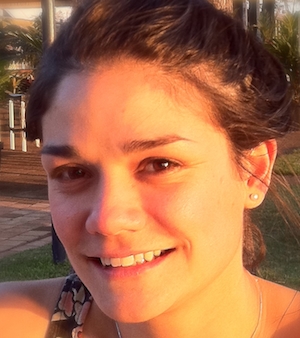When it comes to treating someone in pain we have one way of knowing if our treatment has effected pain relief, and that is the patient’s verbal report. Perhaps another way of knowing whether pain has changed is to look at what’s happening in the brain. Well, this review is addressing precisely this question. Presented here[1] are the findings from numerous functional neuroimaging investigations into the efficacy of non-pharmacological treatments for pain: distraction-based techniques; cognitive-behavioural therapy (CBT); clinical hypnosis; mental imagery; physiotherapy and exercise; biofeedback; and mirror therapy.
Rather than report on the neuroimaging findings, I thought I’d instead share some of my thoughts on the findings of this review.
What I learnt, and have been pondering ever since:
- That surprisingly few studies have explored the effects of treatment with neuroimaging (but…see below!), with only two studies investigating the neural correlates of CBT in pain patients; and
- That mental imagery, which in this context is a “sensory experience in the absence of a direct percept”, is basically hypnosis without the “induction” phase (the point at which we become less conscious of thought and enter a trance [2]). This makes me wonder: what is special about this induction phase? The authors ask what might contribute to the activation patterns we see with hypnosis: is it altered expectancy, sense of control, attentional focus?
What I’m struggling with:
- Isn’t it difficult to define, let alone separate or group, these treatments as they have been reported on here? I would argue that some are general approaches and others are specific techniques. The authors discuss these limitations, and comment on the problems in drawing conclusions from these studies.
- As this review has rightly brought to our attention, there are a lot of features which are common to several of these treatments. Most CBT programs teach some elements of physical therapy. And I would argue that distraction from pain plays a big role in a lot of these techniques.
- While a review like this one is useful, it is not a systematic review and as such there is a risk of bias in its conclusions; we cannot be sure that all studies addressing this particular question have been picked up by this team and reported on here.
I agree with these authors in that it is possible that neuroimaging will be increasingly used for acquiring biomarkers and objective correlates to pain ratings in clinical trials. However I would argue that neuroimaging can currently only be used to explore possible mechanisms behind treatment efficacy in the research world. I personally don’t think, in these early days of neuroimaging, that these findings have implications for treatment. In the clinical world, I’m afraid that we still have to rely on that scale of 0—10.
Flavia Di Pietro
 Flavia Di Pietro is a PhD student in the Body and Mind Research Group, Sydney. She is investigating the development of Complex Regional Pain Syndrome (CRPS) after wrist fracture. Specifically, Flavia’s PhD involves brain scanning people who are in a higher than usual amount of pain in the first 3 weeks after the fracture, and then following them for a few months. Her question concerns whether or not there are changes in brain activation patterns that emerge before the CRPS does and if so, what do they tell us about the condition? Here is Flavia talking about what she does and a link to her published research. BiM author’s downloadable PDFs can be found here.
Flavia Di Pietro is a PhD student in the Body and Mind Research Group, Sydney. She is investigating the development of Complex Regional Pain Syndrome (CRPS) after wrist fracture. Specifically, Flavia’s PhD involves brain scanning people who are in a higher than usual amount of pain in the first 3 weeks after the fracture, and then following them for a few months. Her question concerns whether or not there are changes in brain activation patterns that emerge before the CRPS does and if so, what do they tell us about the condition? Here is Flavia talking about what she does and a link to her published research. BiM author’s downloadable PDFs can be found here.
References
[1] Jensen KB, Berna C, Loggia ML, Wasan AD, Edwards RR, & Gollub RL (2012). The use of functional neuroimaging to evaluate psychological and other non-pharmacological treatments for clinical pain. Neuroscience letters, 520 (2), 156-64 PMID: 22445888
[2] Spiegel H, & Greenleaf M (2005). Commentary: defining hypnosis. The American journal of clinical hypnosis, 48 (2-3), 111-6 PMID: 16482834



